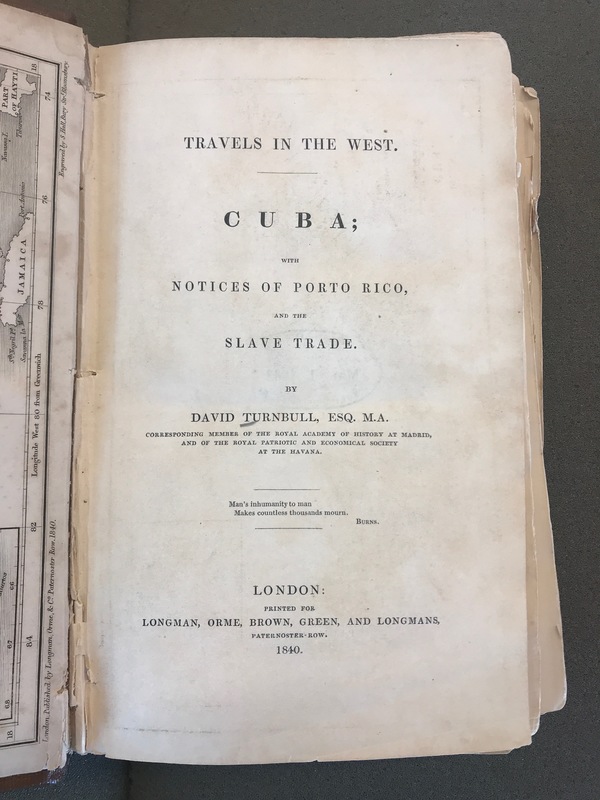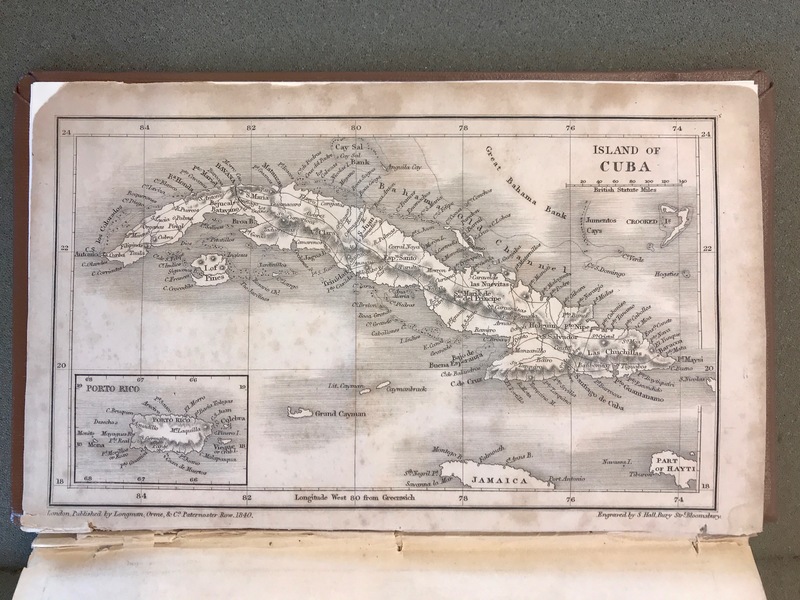Travels in the West
As the British Empire developed its identity as a dominant world power in the Western Hemisphere, it encroached on the Spanish crown’s lingering Caribbean holdings. Havana, for example, contained the largest trading port in the Caribbean and under Spanish control, tariffs were exorbitant for ships flying the Union Jack. For the British, any effort to weaken Spain’s tight grip over this port should be taken.
A leading 19th-century abolitionist and the British consul to Cuba, David Turnbull wrote extensively against Spanish colonial practices in concordance with British views on the subject. Turnbull’s Travels in the West, published in 1840, marked the seven-year anniversary of the British Empire’s abolition of slavery. The crown’s language regarding this decision was often self-congratulatory, but Turnbull’s travel narrative displays a unique approach. His text does not overtly market itself as an abolitionist narrative, but the content invariably has that bent. For example, the epigraph, located on the title page, reads “Man’s inhumanity to man / Makes countless thousands mourn. —Burns.” Setting the stage for the rest of the text, the tone of this epigraph offers the reader clues to Turnbull’s, and his patron’s, “The Right Honourable, The Earl of Clarendon, G.C.B.,” stance on abolitionism.
The page facing the title page has a map of Cuba—either the map was inked fairly heavily, or the paper stock was thin, as the ink lightly bled from the verso to the recto: the title page. The map itself indicates Cuban port cities, where slaves would often be sold. For a treatise on the economic benefits of abolishing slavery on an island with such commercial activity, this map clearly delineates the areas that would be most affected.
Though the travel narrative itself is well bound, it was probably not a very expensive text, as indicated by an advertisement on the last page, which markets “Part I of the geographical dictionary of the new world.” The production quality of the text further supports this view. Many of the roughly cut pages, as indicated by Image #3, are falling out of the sewn bending. Given this textual evidence, readers can gather that Turnbull (or his publishers) would have liked for his Travels in the West to be disseminated beyond just a few upper-class readers. A popular genre, travel literature surely influenced readers’ opinions on the topics it discussed. [1]
When viewing the travel narrative as a researcher’s notes, compared to a memoir, a contemporary reader might accept Turnbull’s narrative as fact because of his anecdotal presentation—which incorporates his own experiences as first-person evidence.[2] By presenting his observations as facts, Turnbull grounds his argument in an economic discussion of the benefits of abolition. Foreseeing wide dissemination of his travel narrative, by subtly incorporating abolitionist language into his travel narrative, the author influences readers to subconsciously move towards Turnbull’s position.
—Leigh Schlecht


